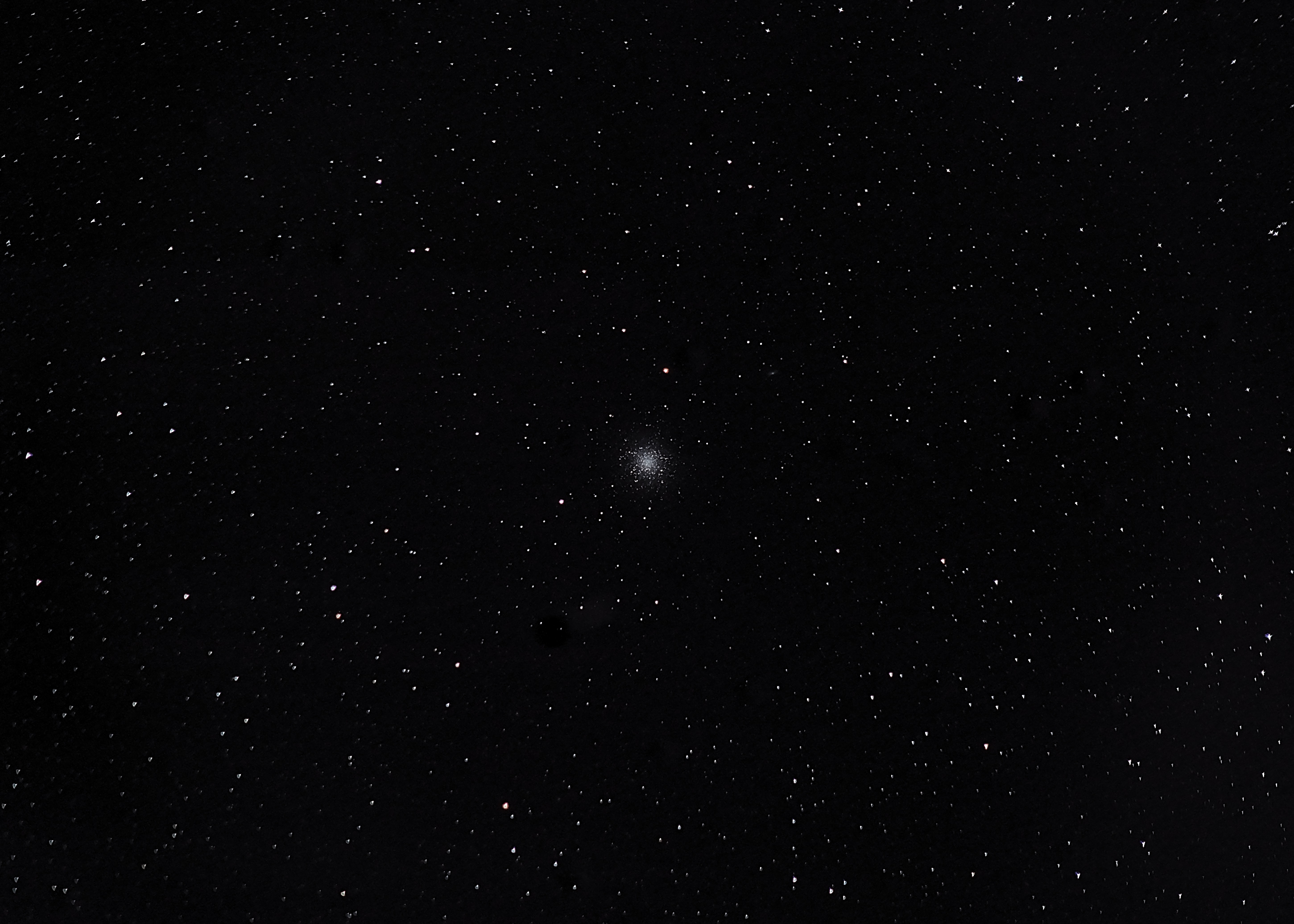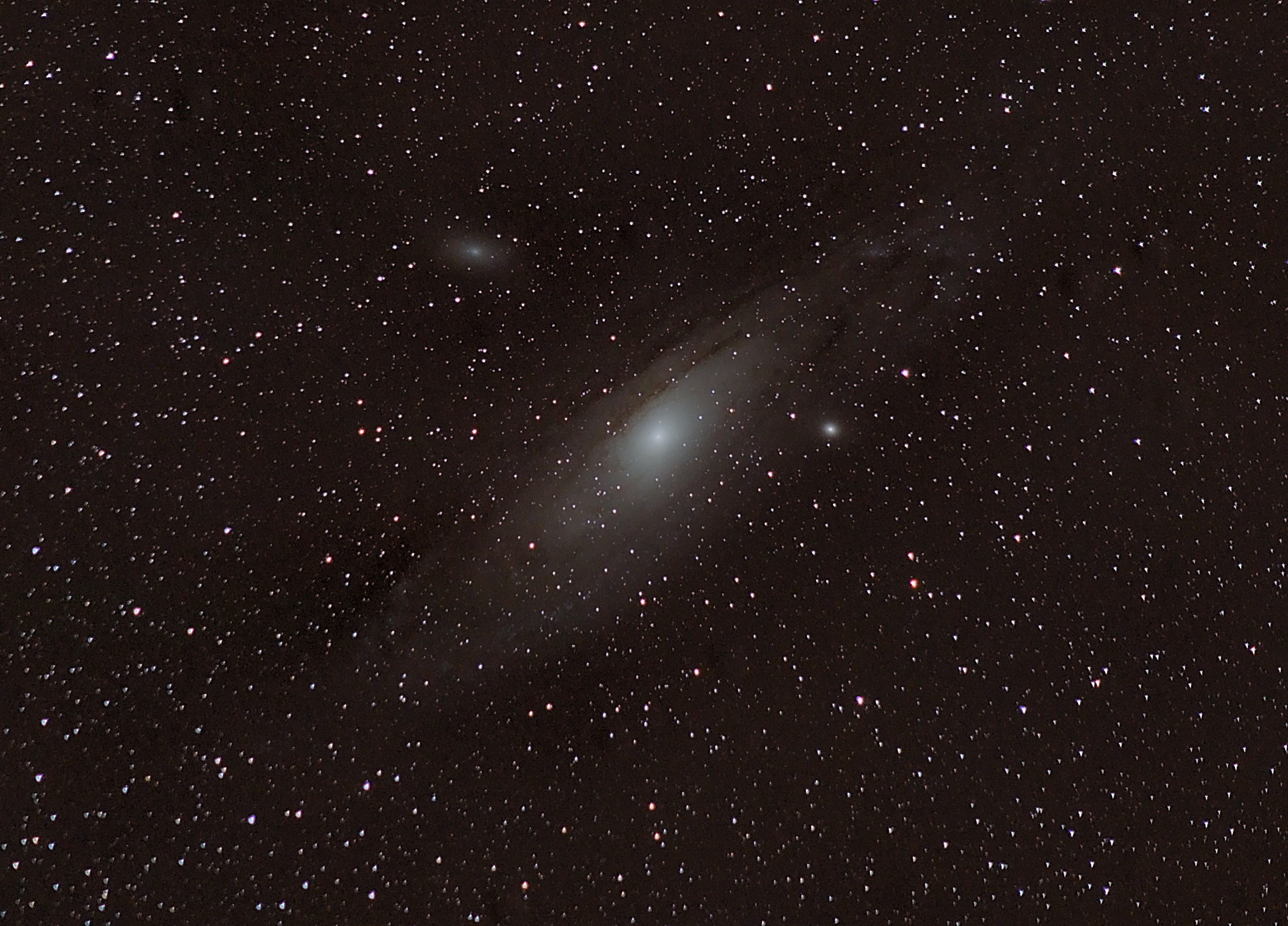lens testing
13 Sep 2018The clouds have parted! After a week of heavy clouds, we finally had some clear skies last night. I might get lucky and have a few more days this weekend, too, despite the barrage of hurricanes currently off the coast. I setup the mount last night and decided to play with using just my camera, the Canon 200mm/2.8 and a Tamron 2X teleconverter. I knew the TC is not particularly great, but I was hoping the optical compromises would be worth the 400mm focal length and that I might be able to get some interesting stuff.
First attempt was M13 – it came out okay, all things considered. The TC added some horrendous coma in the corners, but I knew most of these targets would be in the center of the frame, so it looked okay. The good news is: I figured out how to fix the light pollution gradient! Turns out the Pixinsight tool I’ve been looking for is DynamicBackgroundExtraction (DBE). It lets you sample points along an image (avoiding actual data/stars) and develops a gradient that you can then subtract or divide from the master image. It worked great!
- Subject: M13
- Camera: Sony A7S II
- Lens: Canon 200mm/2.8 II w/ Tamron 2X teleconverter
- Aperture: f/2.8
- ISO: 640
- Shutter Speed: 30”
- Light Frames: 40
- Dark Frames: 20
- Flat Frames: 20
- Offset Frames: 20
- Software: Pixinsight - Color Calibration, DynamicBackgroundExtraction, Masked Stretch, Unsharp Mask
Next I tried Andromeda again because … why not. I’m sure it will be a frequent subject. This turned out okay, all things considered – not a lot of color or detail, but that’s to be expected given all the light pollution and the amount of glass it’s going through (including the cheap teleconverter). Still, glad I got a result without the awful gradient.
- Subject: Andromeda (M31)
- Camera: Sony A7S II
- Lens: Canon 200mm/2.8 II w/ Tamron 2X teleconverter
- Aperture: f/2.8
- ISO: 640
- Shutter Speed: 30”
- Light Frames: 40
- Dark Frames: 20
- Flat Frames: 20
- Offset Frames: 20
- Software: Pixinsight - Color Calibration, DynamicBackgroundExtraction, Masked Stretch, Unsharp Mask
Lastly I picked an arbitrary target before bed – the Triangulum Galaxy (M33). I thought this would be a long-shot, because I could hardly see anything in the test shots, but it turned out pretty well! I cheated and used the same darks, flats and offsets I took for andromeda since nothing else had changed, and I didn’t notice any detrimental effect – although there’s still some dust spots that weren’t eliminated by the flats. I’m not 100% certain why, but I should probably just clean my shit, really.
I was pleased to get a bit of color in this, and impressed that I got any detail in the galaxy at all – probably owing to its location high in the sky, so I was cutting through less atmosphere (and less glare from streetlight pollution).
- Subject: Triangulum Galaxy (M33)
- Camera: Sony A7S II
- Lens: Canon 200mm/2.8 II w/ Tamron 2X teleconverter
- Aperture: f/2.8
- ISO: 640
- Shutter Speed: 30”
- Light Frames: 40
- Dark Frames: 20
- Flat Frames: 20
- Offset Frames: 20
- Software: Pixinsight - Color Calibration, DynamicBackgroundExtraction, Masked Stretch, Unsharp Mask
All in all a pretty successful night – looking forward to having a chance to set this stuff up in some darker skies. I’m still deliberating on what path I want to choose for upgrading my optics – for now I am still enjoying learning how to use the mount and the processing tools. There are so many options to choose from between reflectors, refractors, etc – I’m still feeling out what I think the best path is. Using the AWB OneSky has somewhat lost its allure because it’s a tremendous pain to use (and obtain focus with), compared to the simplicity of mounting the camera + lens itself. But, I’m trying not to let this color my decision, since obviously the AWB OneSky is about as far as you can get from a telescope designed for imaging, and I know that better refractor setups are not without their annoyances (e.g. sensitivity to temp/conditions, etc).


